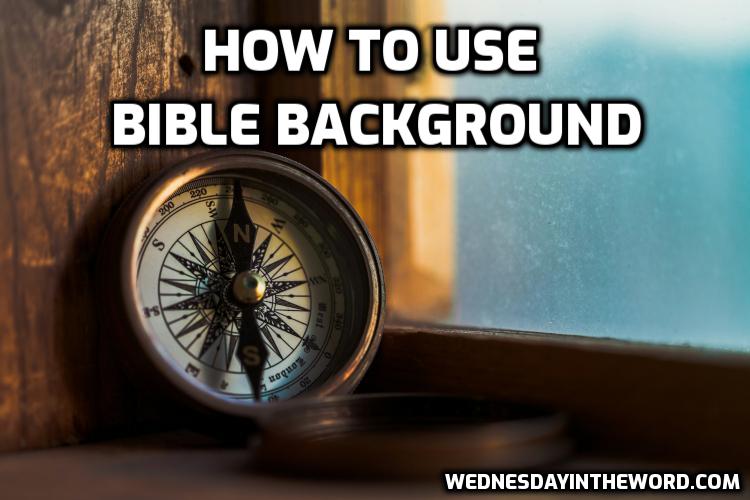Background is your flashlight, not your steering wheel. Use it to illuminate the author’s path. Then keep walking where the paragraph leads.
How to Use Bible Backgrounds (Maps, Culture, and History—Without Overreach)
Bottom line: Background helps you see what the author assumed his first readers knew: where they lived, how they traveled, what customs shaped their decisions. Used wisely, maps, culture, and history clarify the text’s meaning; they don’t create it. Start with the text, add just-enough background, and keep the author’s logic in the driver’s seat.
What background includes (and where to find it fast)
Geography & maps — places, routes, distances, terrain.
History & chronology — who ruled, what wars/edicts shaped daily life.
Culture & customs — dress, economics, honor/shame dynamics, synagogue life, Roman law, etc. Multi-volume Bible encyclopedias/dictionaries are ideal for quick orientation.
Bible Study Tools #5: Multi-volume Encyclopedias
A text-first, background-second workflow (4 steps)
Step 1: Observe the passage and trace the argument
Read the whole unit and outline its flow before touching a background book. This protects you from letting an interesting fact dictate meaning.
Step 2: List background questions your observation actually raised
Examples: Where is Galatia? How far is Corinth from Ephesus? What did a denarius buy? This keeps research targeted and humble.
Bible Study 101: Background & History
Step 3: Consult reliable tools
- Open a book introduction and a dictionary/encyclopedia entry for the specific topic; note only what clarifies your paragraph.
- Pull a map for locations/routes and a timeline for rulers/edicts.
- Commentaries are often great sources for background information.
Resources by Book of the Bible
Bible Study Tools #4: Lexicons & Dictionaries
Step 4: Synthesize back into the text
Ask: How does this detail illuminate the author’s logic? Keep background in the supporting role as you finalize the big idea and application.
Example background study: Why Gentiles Gave to Jerusalem (2 Corinthians 8-9)
When background helps most (with examples to adapt)
- Geography clarifies travel and timing. A map of the Aegean makes Paul’s itinerary changes in Acts/Corinthians make sense.
- Cultural practices frame and sometimes explain tricky texts.
- Historical decrees shape context. Knowing a Persian or Roman edict can explain why a community acts as it does; check an encyclopedia intro, then return to the paragraph’s logic.
Guardrails: background without overreach
- Never let background trump the paragraph. If a background claim forces a reading that doesn’t fit the author’s flow, hold it loosely. Rethink and consider if you’ve misunderstood either the text or the background.
- Prioritize primary and standard references. Prefer recognized Bible dictionaries/encyclopedias and sober introductions over blog anecdotes.
- Distinguish data from hypothesis. Label uncertain reconstructions as “possible,” not “proven.”
- Keep it relevant. Capture enough to read the text more accurately; don’t turn a study into a travelogue.
A 10-minute background check (mini-lab)
- Read the paragraph; note two background questions your observation raised.
- Research using one map + one intro/dictionary entry.
- Write two sentences: What’s clearer now? How does it support the author’s point?
- Keep the detail only if it tightens your outline or clarifies a term/logic.
Keep learning (handy links)
- Bible Study 101: Tools,
- Background & History collection.
- Bible Introductions.
- New Testament Maps.
- Old Testament Maps.
- Geography of the New Testament
- Bible Maps PreceptsAustin.
Photo by Jordan Madrid on Unsplash

